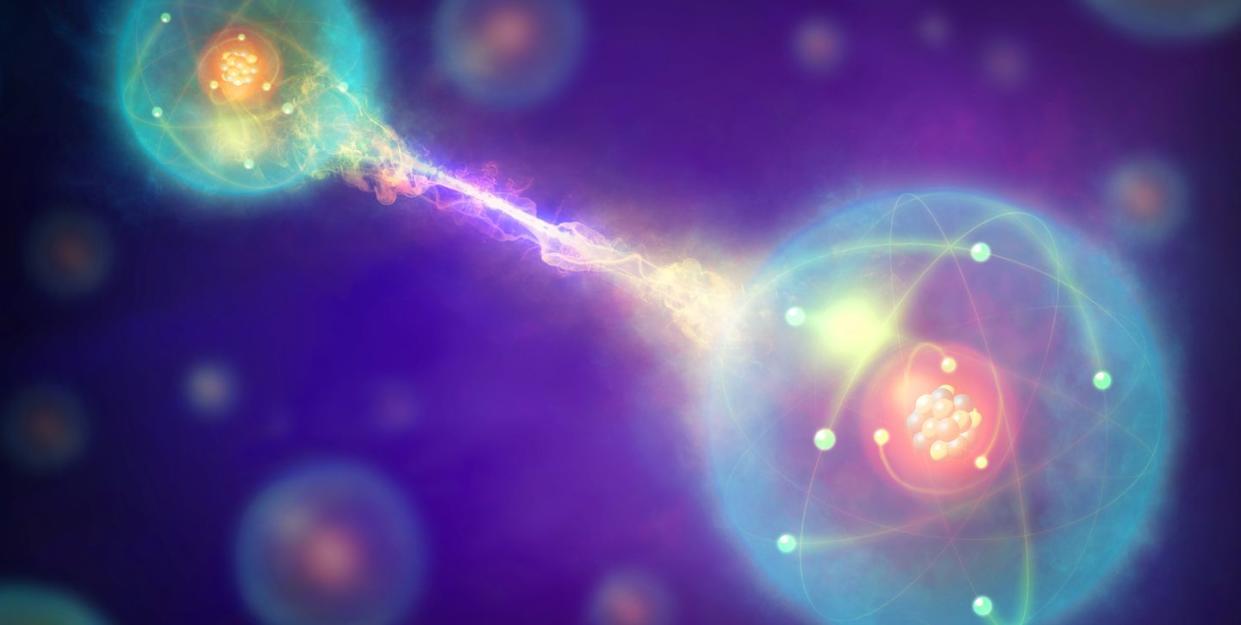At Last, Scientists Have Measured a Paradoxical Quantum Phenomenon

"Hearst Magazines and Yahoo may earn commission or revenue on some items through these links."
Scientists confirmed a long-held rule of quantum physics.
For the first time, researchers were able to see experimentally that information shared between quantum subsystems depends on surface area rather than volume.
This is very different from the way particles interact in the non-quantum world, where measuring one particle or one subsystem tells you nothing about another.
It’s share and share alike in the quantum world, but only at a surface level. A group of scientists just managed to experimentally confirm a longstanding paradoxical rule of quantum systems: they can share information, but how much depends on the surface area of a system, not on its volume.
That might seem like a “so what?” at first, but it’s remarkably different from the way we view our world. To quote an analogy from a press release on the result, “the information contained in a book depends on its volume—not merely on the area of the book's cover. In the quantum world, however, information is often closely linked to surface area.”
That relationship hinges on an idea called “mutual information.” It’s key in quantum, and it’s the idea that if two particles are close enough (within a short distance called the “coherence length”), and behaving quantumly, measuring one particle will tell you information about another. In our non-quantum world, this would be like being introduced to someone new, and suddenly also knowing the name of the person standing right next to them. And this isn’t just particle to particle—it can also be between two subsystems in the same system.
Subsystem to subsystem is where the surface area connection comes in. No matter how much information is contained in one subsystem, the only data that can be transferred to particles in the adjoining subsystem is from the particles right at the surface where the two meet. Anything from further back in the quantum cloud can’t transfer over into the new subsystem. It’s more like a stamp than a download.
In order to prove this, the researchers took a gas in a container and cooled it down to as close to absolute zero as possible. At temperatures like this, particles stop behaving the way they do in the everyday world at everyday temperatures and start behaving quantumly, sharing their information. Then, the researchers poked their gas.
Not literally, but they did disturb the gas. “It's like throwing a rock into a pond and then getting information about the state of the liquid and the pond from the consequent waves,” Jörg Schmiedmayer, one of the researchers on the study, said in a press release.
Once the gas had been poked, the researchers were able to use specially developed techniques to see how the atoms in the gas interacted quantumly with each other, and were able to prove that the information shared was dependent on surface area instead of volume. They were also able to confirm that temperature has an effect on that “coherence length” distance of information-sharing. Get a particle too hot, and coherence disappears. Get it down to almost absolute zero, and it pops back up.
The confirmation of this surface area-information sharing relationship has big implications across a wide range of quantum field, ranging from quantum gravity to solid-state physics. We still have a lot to learn about quantum physics, but every time we can confirm we were right about something, we get one step closer to completing the picture.
You Might Also Like

